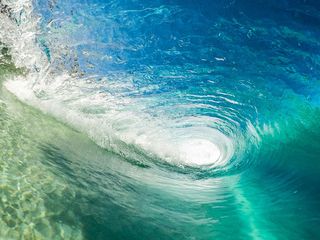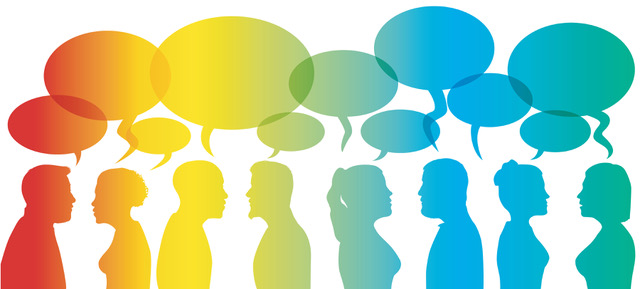By Nicklas Balboa and Richard D. Glaser, Ph.D.
Published in: Psychology Today
At summer's end, focusing on the moment.
As summer winds to an end I can't help but be overcome with a feeling of gratitude for the beach, gratitude for California, and gratitude for the practice of surfing. Although California is one of the fastest-growing places in the world in terms of technology, population, and innovation, it still has pockets of beaches that serve as a getaway from all the noise and high-frequency vibrations of the growing city life.
While many people spend their time checking out the latest inventions, sharing on social media, and working to keep their minds busy, surfing provides a release so grand that locals prefer to label this practice a religious or spiritual occasion, rather than a sport. This grand appreciation is intertwined with surf history, accounting for its expanse of myth, legend, and ritual.
History: Though the origins of humans and surfing can be traced back to Tahiti and Polynesian culture, it is the Native Hawaiians who integrated the art of surfing into their culture. Born out of ritual, there are many aspects of surfing that bring us back to nature and its mystic roots.
For example, surfboards used to grow on trees. Traditionally, Hawaiians selected surfboards from trees like the koa, the wiliwili, or the kukui. These natural woods would take the form of much larger boards than we are used to seeing today; over 20 feet at times. Longboards are a symbol of the style of soul surfing that the Hawaiians are famous for. The appreciation and respect for nature’s power and beauty are channeled into the board through the native wood, creation of a special connection between the rider and the water.
This spiritual connection is not one that concerns time or even thought. Rather, surfing is about having fun and most importantly being in the water.
Journey to Letting Go: With classic beach breaks that take one- or two-mile hike through downhill forest and river, the need for a phone is scarce. Even if you had one, there aren’t any cell towers down these golden cliffs. After leaving your 21st-century life behind in your car, you and your board are about to embark on a nature bath like no other; winding down the hills of a cliff-side forest, seeing all sorts of deer, peacocks, and even horses. Just when you think that the walk is going to be eternal, you take those first few breathtaking, barefoot steps on the warm, white sand.
From reading the water (currents and paddle outs) to popping up, it’s all about letting go and unlocking intuition. The drop-in to the wave is so fast that you do not have time to think, it is just a reaction. Sometimes after dropping in and making the first turn into the wave you may become conscious of what you just did and realize that the takeoff was automatic.
Automaticity is the ability to perform an action while lowering your mind’s activity and overall cognitive load, allowing responses to become automatic. It is the result of practice, repetition, and learning and is a key factor for gaining fluency and comprehension of both motor and mental tasks.
What characterizes this state from others is the ability to quickly, efficiently, and effectively respond to the environment without calling upon the complex executive features of prefrontal cognition.
How is this possible?
Effort Defeats the Purpose: Many professional athletes describe their excellent performance abilities based on heightened awareness, it is as if time slowed down allowing them to be better at their craft. As famous surfer Bill Hamilton said: "Sliding a wave removes our brains out of the ordinary and slips us into the extraordinary of being there now. No more worries about mortgages or strife of being poor or rich. When you enter the domain of an ocean cylinder, that moment, those split seconds belong to the Zen part of just being. Period."
This is an example of flow; letting go of our inner critic and expressing freely. How we get to this moment is dependent on a few things.

Time slows inside the barrel. Source: Pexels/Pixabay
Focusing on the Moment: Imagine you are in the ocean as a wave approaches. There is a tense moment of stress because you know that it is time to make a decision: go or back off. The rush of chemicals releasing in your body may even dilate time, an effect known as Tachypsychia. This effect commonly activates during physical exertion or acute trauma.
By activating our fight-or-flight response and dialing into the moment through a wealth of biochemical activity (i.e. dopamine, epinephrine and norepinephrine release) we gain access to our incredible motor competencies. Faster reaction time, improved focus, and flow-like decision-making capabilities come online and allow us to act in spectacular form, like when a surfer free-falls into a massive wave or soulfully slides down the line on a knee-high cruiser.
Behind the Curtain: As these processes become more and more implicit, it begs the question of which brain area is responsible for coordinating such incredible movements? Located in the back of the head, this mini-brain is the home of proprioception, or our sense of self in 3-D space. The cerebellum coordinates and prepares motor functions and is also implicated in implicit learning, for example learning how to surf.
What’s the secret? Practice, don’t think. Shutting out the inner critic or voice in your head allows you and your body to attune to the environment. It is a 1-1 relationship built on the trust of practice. Through hours and hours of repetition, you can learn to let go in the moment and trust your body. If you are new to a task, then there is a degree of novelty that will result in erroneous movements and thoughts. An expert removes these unnecessary movements in favor of the conservation of energy.
By trusting your body to react as you practiced, you allow the brain to redistribute resources from this logical, rule-following brain and create new connections; allowing your body and mind to express in ways that seem impossible; like catching a wave.









